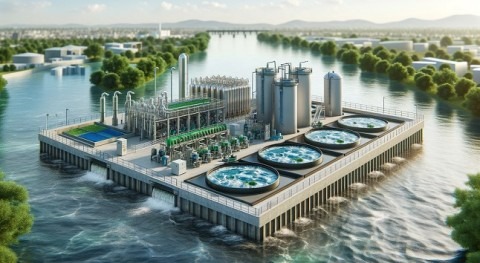What is the Scheme of a Wastewater Treatment Plant?

In the field of water management, understanding the scheme of a wastewater treatment plant is crucial to ensure efficient and sustainable treatment of wastewater. This article, aimed at professionals in the sector, delves into the technology and processes involved in a modern wastewater treatment plant, highlighting its importance in the protection of water resources and the environment.
1 . Components and Technology of the Wastewater Treatment Plant
Wastewater treatment plants combine various components and advanced technologies for water treatment, each fulfilling specific functions.
- Preliminary Cleaning and Primary Treatment: Includes mechanical screens for the removal of solid waste, sand removers for sediment, and primary settlers where suspended solids settle by gravity.
- Secondary Treatment: Employs aerobic biological reactors, such as activated sludge tanks, where microorganisms decompose organic matter. Processes like anaerobic digestion are also used to reduce sludge volume and produce biogas.
- Tertiary and Advanced Treatment: Includes advanced filtration processes, reverse osmosis, and activated carbon adsorption to remove dissolved contaminants, as well as UV systems or chlorination for final disinfection.
2 . Control and Automation Systems
The implementation of automated control systems and telemetry technologies allows precise monitoring and adjustment of treatment processes. State-of-the-art sensors and SCADA (Supervisory Control and Data Acquisition) systems provide real-time data for optimal management.
3 . Innovations in Wastewater Management
Recent innovations in wastewater treatment include the use of nanotechnology to remove specific contaminants and the implementation of nutrient recovery processes like phosphorus. Additionally, treatment methods based on the circular economy are being developed to maximize water reuse and energy recovery.
4 . Environmental Impact and Sustainability
Modern wastewater treatment plants are designed to minimize their environmental impact. Implementing energy-efficient technologies, using renewable energies, and sustainable sludge management are key aspects in reducing the carbon footprint and promoting sustainability.
5 . Conclusion
The scheme of a wastewater treatment plant is complex and multifaceted, involving a range of technologies and processes. Continuous improvements in these systems are essential to face the challenges of wastewater treatment in an ever-changing world, ensuring the protection of water resources and the environment for future generations.







